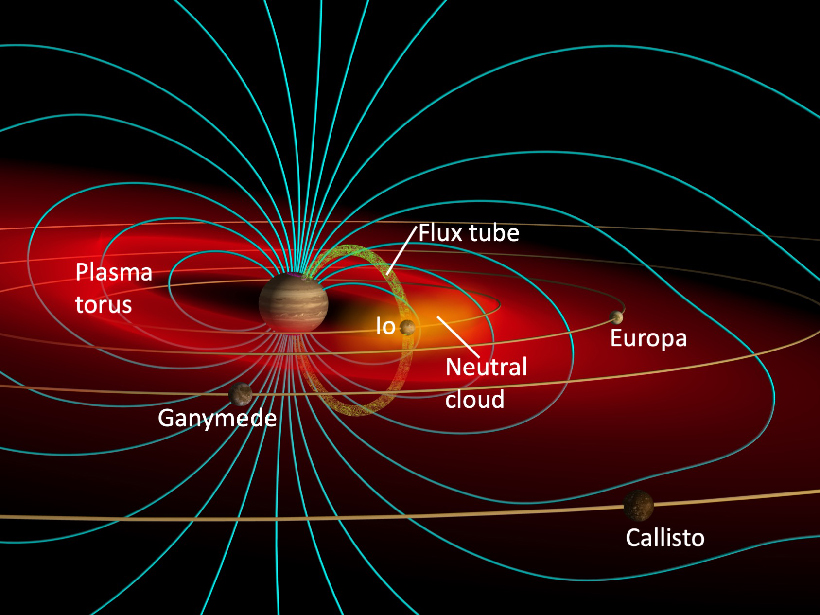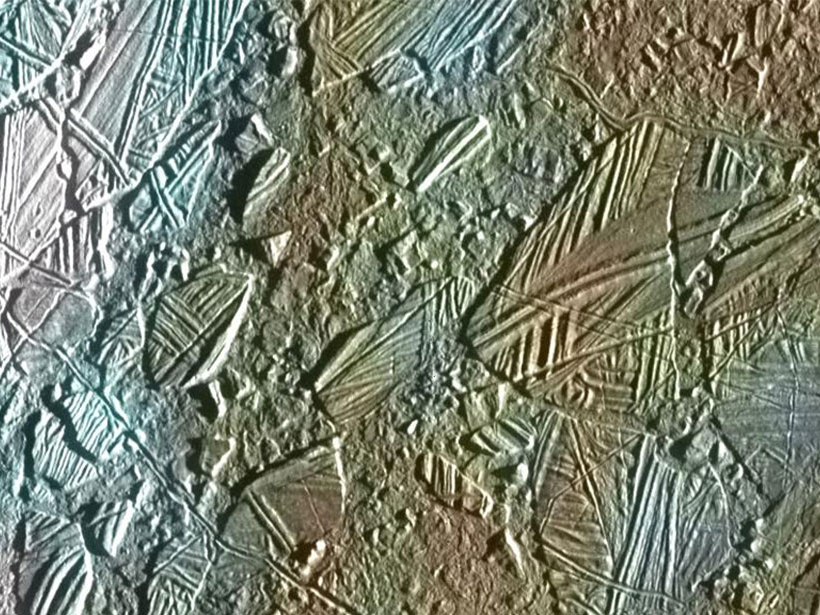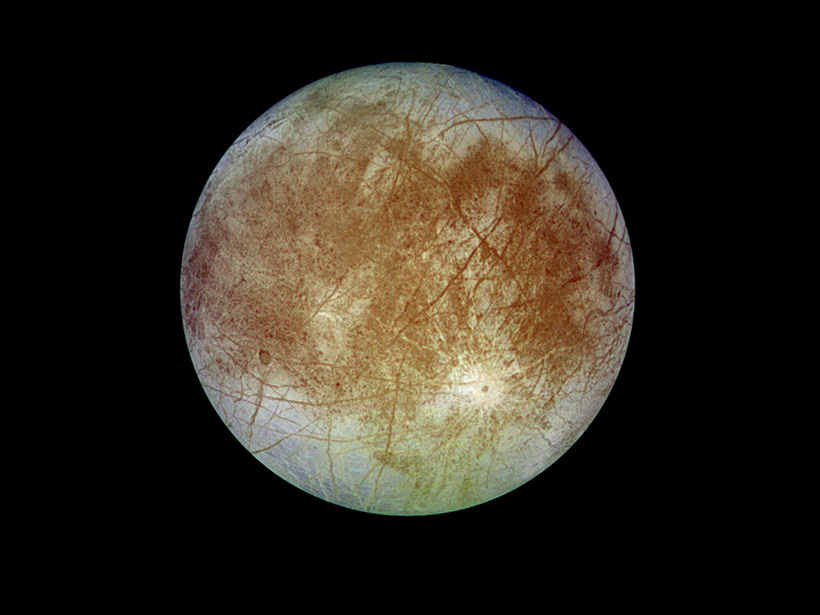Decades of research have illuminated how Io and Europa shape—and are shaped by—Jupiter’s giant magnetosphere.
Europa
Jupiter’s Galilean Moons May Have Formed Slowly
A new model is the first to simultaneously explain many of the moons’ characteristics, including their mass, orbits, and icy composition
Mmm, Salt—Europa’s Hidden Ocean May Contain the Table Variety
Hubble Space Telescope observations suggest that sodium chloride exists in young, geologically active regions on Europa, likely fed by upwelling from the moon’s subsurface ocean.
Huge Blades of Ice May Partially Cover Jupiter’s Moon Europa
Conditions are right for “penitentes” up to 15 meters high to form on the Jovian moon, new research shows. The spires might prevent a lander from exploring Europa’s equatorial region.
How Hot Is Europa? Now There’s a Map for That
The new global map of Europa’s surface heat also highlighted one spot on the moon that is inexplicably cold.
How Jupiter’s Icy Moons Got Their Bands and Grooves
Europa’s churning ice crust could reveal signs of ocean life, new study suggests.
Seeking Salt That Surfaces from Europa’s Hidden Ocean
Irradiation-induced color changes in sodium chloride could reveal whether it came from ocean water mixing with surface water, a key component of the moon’s potential to support life.
Geologic Map of Europa Highlights Targets for Future Exploration
The first such map of the icy moon puts its strange surface features into perspective.
New Report Details How NASA Could Land on Europa
A team of scientists laid out extensive details about a hypothetical future landing mission to find life on Jupiter's moon.
New Images Give More Proof for Europa's Plumes
Researchers used a modified version of a technique for discovering exoplanets to view Jupiter's icy moon in a new light.










